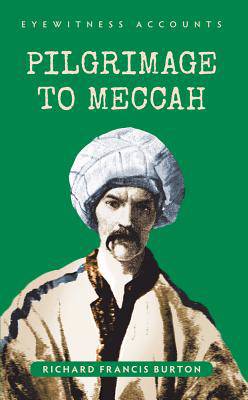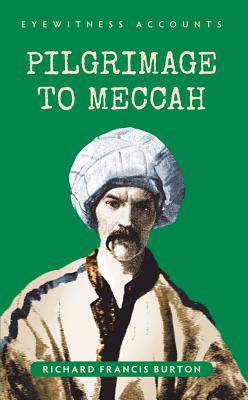
- Afhalen na 1 uur in een winkel met voorraad
- Gratis thuislevering in België vanaf € 30
- Ruim aanbod met 7 miljoen producten
- Afhalen na 1 uur in een winkel met voorraad
- Gratis thuislevering in België vanaf € 30
- Ruim aanbod met 7 miljoen producten
Zoeken
Omschrijving
The journey that made Richard Burton famous as a traveller and explorer in the nineteenth century was a pilgrimage to Mecca, which he carried out disguised as a Pashtun tribesman from what is now north-western Pakistan or Afghanistan. Having spent seven years in India with the army of the East India Company, Burton was familiar with the customs and languages but the journey, travelling from Alexandria in Egypt south to the Red Sea and then from the coast of the Arabian Peninsula, was difficult and his caravan was attacked by bandits. After the conclusion of his journey, Burton briefly served in the Crimean War, was hired by the Royal Geographical Society to explore Africa's east coast and was the first European to see Lake Tanganyika. Later in his life, he would join the Diplomatic Service, serving in Fernando Po, Santos and Trieste among others. This famous account describes a journey forbidden to non-Muslims made by one of the great travellers, adventurers, writers and linguists of the Victorian age.
Specificaties
Betrokkenen
- Auteur(s):
- Uitgeverij:
Inhoud
- Aantal bladzijden:
- 320
- Taal:
- Engels
- Reeks:
Eigenschappen
- Productcode (EAN):
- 9781445644219
- Verschijningsdatum:
- 15/03/2015
- Uitvoering:
- Paperback
- Formaat:
- Trade paperback (VS)
- Afmetingen:
- 124 mm x 198 mm
- Gewicht:
- 299 g

Alleen bij Standaard Boekhandel
+ 25 punten op je klantenkaart van Standaard Boekhandel
Beoordelingen
We publiceren alleen reviews die voldoen aan de voorwaarden voor reviews. Bekijk onze voorwaarden voor reviews.











